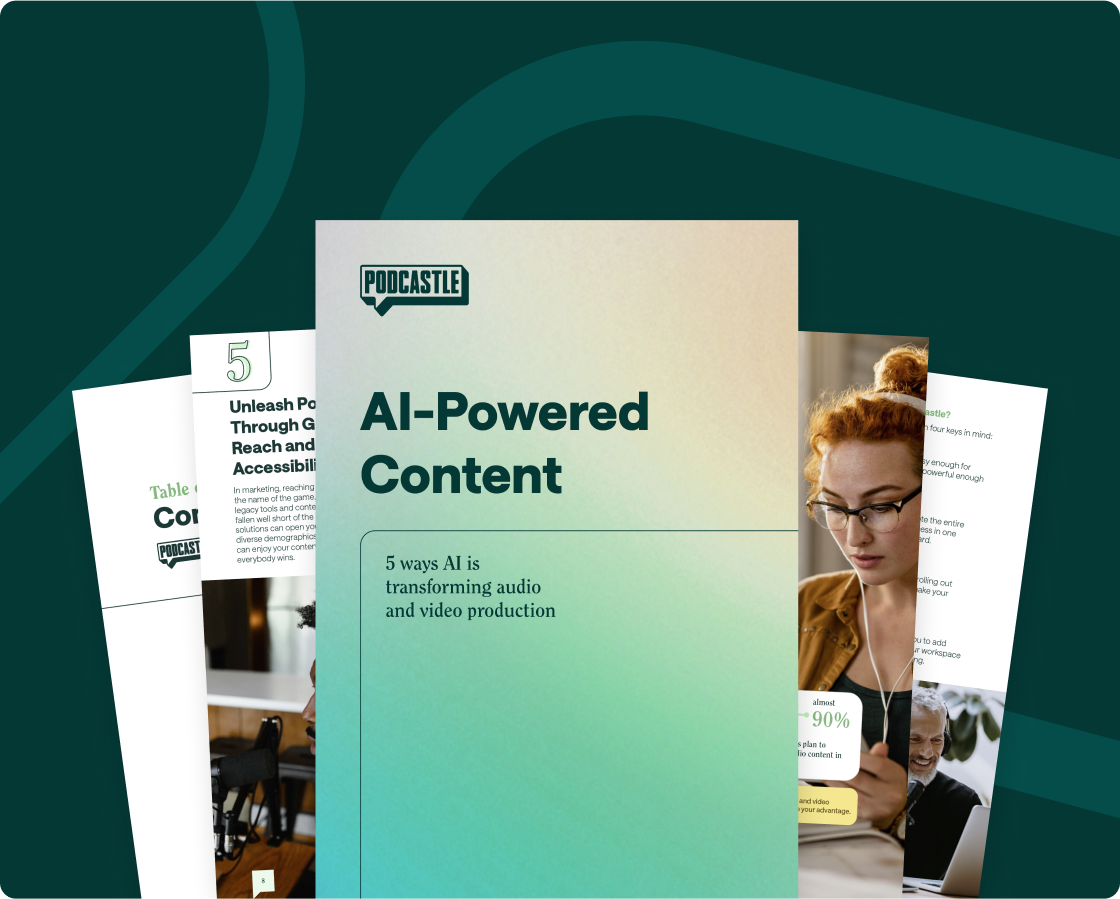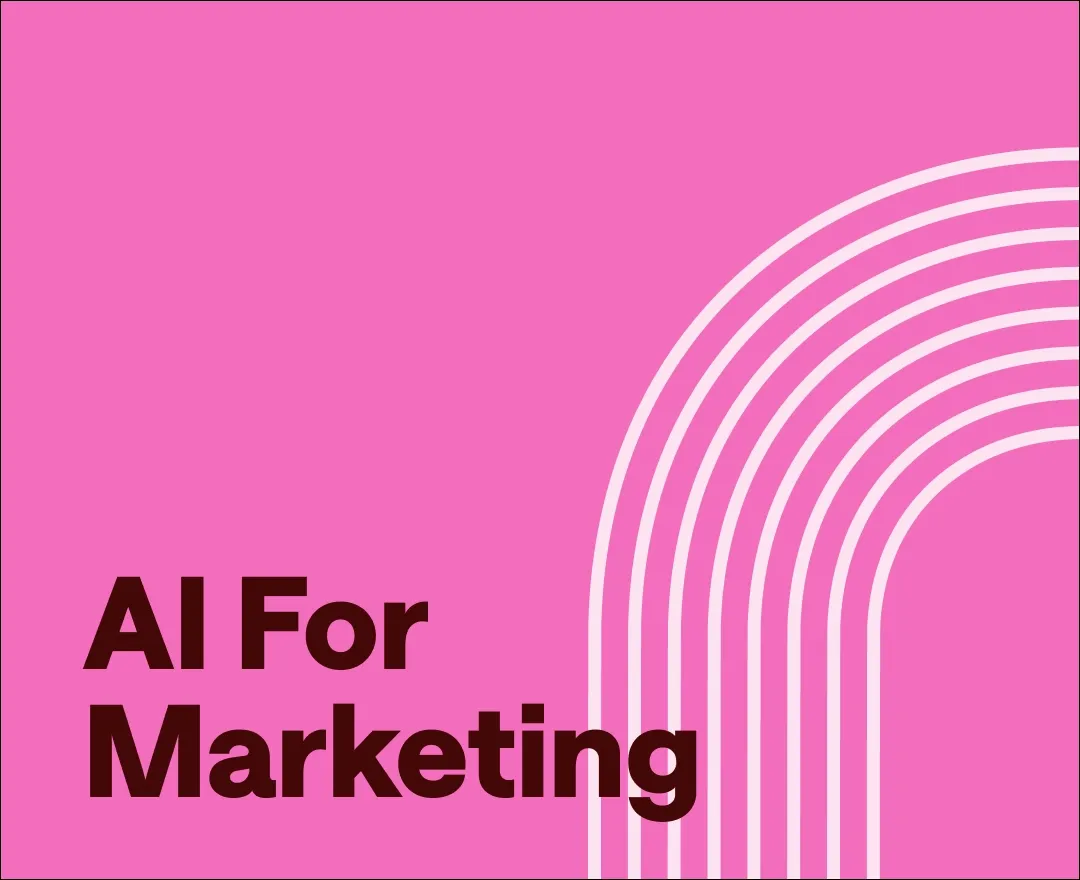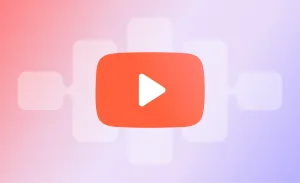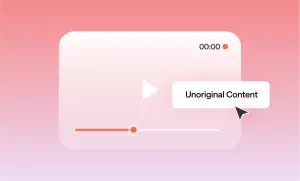Let's face it: AI has become integral to (almost) every marketer's toolkit, especially when it comes to content creation.
In fact, almost 90% of marketers plan to increase audio content in the future, while 70% consider video their most effective conversion tool.
Let's walk you through 10 powerful strategies that'll help you harness the power of AI to boost your marketing efforts.
AI marketing in 2025: What we learned from 500+ experts
We recently conducted a survey on AI in marketing, and with over 500 marketing professionals sharing their insights, we've uncovered some fascinating trends and unexpected findings.
Here's the scoop on how marketers use AI for marketing in 2024:
- 79% of American marketers use AI in their role
- Content creation is the top use of AI in marketing at 45%
- 71% of American marketers spend up to $50 monthly on AI tools
- Ideation is the second most common use of AI in marketing at 32%
- 29% of marketers use AI for content strategy, while 28% employ it for design purposes
- 42% of marketers want to see more AI development in design, while 41% want more AI development in content creation
- The top areas where marketers want to see more AI development are content strategy and planning (37%), followed by reporting (31%)
- Gen Z marketers primarily use AI for content planning (38%)
- Content creation is the primary use of AI for Millennials (49%), Gen X (51%), and Baby Boomers (41%) in marketing roles.
- 80% of American marketers use ChatGPT for marketing strategy
- Grammarly is the second most popular AI tool, used by 32% of marketers
- DALLE is used by 13% of marketers
- 78% of Gen Z marketers use ChatGPT, compared to 44% of Millenials
- 37% of Baby Boomers use Grammarly in their marketing role
- 15% of Gen X marketers use DALLE
- The energy and utilities industry spends the most on AI tools, averaging $430.10 monthly
- Finance and banking is the second-highest spending industry on AI tools at $294.31 monthly
- 16% of marketers plan to create customized AI tools for 2024
- 31% say AI has streamlined their content creation and distribution processes
- 29% report AI has improved their email marketing campaign performance
- 15% of American marketers report that AI has enhanced their SEO and SEM strategies for better visibility and traffic
- 26% say AI has optimized their social media advertising efforts
- 26% report AI has improved their customer segmentation and targeting strategies
- 19% say AI has improved their website and landing page optimization
- 19% report AI has enabled personalized customer experiences at scale
- 17% say AI has enhanced their customer service and support initiatives
- 16% report AI has improved their understanding of customer sentiment and feedback
- 8% of marketers currently sell AI services and plan to sell more
- 11% of Baby Boomer marketers sell AI services, more than any other generation
- 14% of marketers in finance and banking sell AI services, whereas 11% of marketers in the technology sector sell AI services

Using AI for marketing? What you should know
When we talk about AI for digital marketing, we're referring to the use of machine learning, natural language processing, and other advanced technologies to automate and optimize marketing tasks.
AI has come a long way in recent years, evolving from simple automation tools to sophisticated systems that can analyze data, predict trends, and even create content for you. This is crucial, given that less than 20% of marketers believe they have the team and resources to create high-quality audio/video content. With AI, marketers can make more informed decisions, personalize campaigns at scale, and achieve better results with less manual effort.
Here are some key benefits of using AI in your marketing campaigns:
– Skyrocket your productivity by automating time-consuming tasks
– Uncover deep insights about your audience you might have missed
– Deliver personalized experiences that make your customers feel seen
– Optimize your campaigns in real-time for better results
– Scale your marketing efforts without burning out your team
Here are 10 ways you can put the above benefits into action.
1) Generate visual content with AI
Picture this: you need a stunning image for your new ad campaign, but you're short on time and budget. Well, tools like Midjourney, DALLE and Freepik's image generator are revolutionizing the way marketers create visuals, allowing you to conjure up eye-catching images with just a few descriptive words.
These AI tools can whip up everything from product mock-ups to abstract concepts for your brand. Imagine creating a series of unique, on-brand visuals for your social media posts in minutes, or designing custom illustrations for your blog without hiring a graphic designer. The possibilities are practically endless, and the best part? You don't need any design skills to get started.
When using AI image generation tools, make sure to keep the following things in mind:
- Be specific in your prompts (the more details, the better)
- Experiment with different styles and aesthetics
- Use descriptive adjectives to fine-tune the mood and tone
- Combine unexpected elements for truly unique visuals
- Don't be afraid to reiterate (sometimes the best results come from tweaking your initial prompt)
And remember, while AI can create amazing visuals, it's your creative input that will make them truly shine in your marketing campaigns.
2) Create content with generative AI
Ever stared at a blank page, desperately willing words to appear? Those days are over. Generative AI tools like ChatGPT and Claude are transforming the content creation landscape, offering a virtual writing assistant that's always ready to brainstorm, draft, or polish your ideas.
But don't mistake this for a magic "push button, get content" solution. The real power lies in the collaboration between human creativity and AI assistance. Use these tools to overcome writer's block, explore new angles, and amplify your ideas. Just remember to infuse your brand's unique voice and double-check facts before hitting publish.
Everyone can master generative AI in content creation, and this is how:
– Start with a clear outline or key points
– Use AI to overcome writer's block or generate fresh angles
– Always fact-check and edit AI-generated content
– Experiment with different prompts to find what works best
– Leverage AI for content ideation and brainstorming sessions
3) Enhance audio and video production
If audio and video are dominating your content strategy, AI-powered content studios are the way to go. Podcastle is leading the charge in AI-powered audio and video production, from automated editing that saves hours of work, to noise reduction that gives you the studio-quality you always wanted.
This is a game-changer in more than one way. The average professional takes 45-60 minutes to edit each minute of a finished video. And in 2023, the going rate for podcast editing was $73 per hour, compared to $56 just two years prior. This is why relying on AI-powered tools will transform the way you create content, from start to finish.
4) Use AI voices to narrate for you
Many content creation platforms also come with AI voices and voice cloning. Need a polished narration for your explainer video but can't afford professional voice talent, or maybe you just don't have the time to record and edit your voice? Tools like Podcastle come with over 30+ realistic AI voices to do the narration for you, along with a simple and quick voice cloning feature in case your voice is part of your brand.
Our recent research did find that Americans are pretty split on AI voice tech - 26% are cautious, while 24% are all for it. But with that said, 2 in 3 people can't tell the difference between AI and human voices. And over half of Americans are happy to listen to content that uses AI voices. Why not give it a shot?
If you want to save time when working with audio and video files, here's how you can use AI tools:
– Use AI for initial edits, then fine-tune manually
– Experiment with AI voiceovers for different content types
– Leverage noise reduction to improve audio quality in less-than-ideal recording environments
– Don't shy away from AI-suggested edits (they might surprise you)
5) Use AI for SEO and content optimization
Want to climb those search rankings? Nowadays, even SEO tools have begun to introduce AI-powered features to their platforms, like Ahrefs introducing AI meta data generators, or SEMrush launching their very own AI writing assistant. Use these SEO platforms to essentially speedrun your SEO research and analysis. You can then use AI tools like ChatGPT or Claude to help you write, edit, fill in the blanks, and proofread.
If you're eager to use AI for SEO, keep the following in mind:
– Run your draft through an AI content optimizer to boost relevance scores
– Use AI to generate meta descriptions that encourage clicks
– Employ AI-powered tools to identify internal linking opportunities
– Analyze your site structure with AI to improve crawlability
6) Optimize ad campaigns with AI
Ad optimization used to be a tedious game of trial and error. Now? AI's changing the rules. Machine learning algorithms can analyze vast amounts of data to make real-time decisions about ad placements, bids, and targeting. The result? More efficient ad spending and better campaign performance.
AI can help you identify the most promising audience segments, predict which ad creatives will perform best, and even adjust your bidding strategy on the fly.
Looking for some AI advertising tips? Start with these:
– Begin with clear campaign goals to guide AI optimization
– Use AI to test multiple ad variations quickly
– Let AI handle routine optimizations, but keep an eye on overall strategy
– Combine AI insights with human creativity for best results
7) Use AI-powered chatbots
Chatbot voice assistants have proven incredibly useful for handling customer interactions at scale, capable of taking on customer service, generating leads, or even guiding sales down the funnel depending on how you instruct them.
With your goal in mind, link it to your CRM, map out typical conversations, and feed it your FAQs, product details, and brand voice guidelines. This groundwork helps you train your bot before launch, where you can then test it across different scenarios and figure out where it needs fine-tuning. Businesses using marketing AI agents often find faster onboarding and higher lead engagement.
After going live, keep tabs on its performance. Regular updates based on real interactions will keep your bot sharp and effective.
8) Predicting trends or customer behavior
Predictive analytics turns your data into foresight. Start by pinpointing what you want to predict. Maybe it's customer churn or sales trends. With that in mind, gather relevant data from your CRM, sales history, and past campaigns.
Once your model is up and running, test it against known outcomes to gauge its accuracy. Use the insights you gain to shape your strategies. For example, if you predict high churn in a certain customer segment, you can create targeted retention campaigns.
9) Automate your social media management
Social media can eat up your time if you let it. But there are AI platforms focusing on social media management that can help you reclaim those hours. Not only do they schedule posts for you, but they can also suggest content, analyze engagement, and even handle basic customer interactions.
That said, even if it's called automation, it isn't a complete hands-off management of social media. Use these tools to handle routine tasks, freeing you to focus on strategy and genuine audience engagement.
10) Enhance email marketing with AI
There are a handulf of AI-powered platforms catering to email campaigns out there. These can segment your emails based on customer or lead behaviors, personalize its copy for individual recipients, and craft subject lines that are bound to boost open rates.
One of the most powerful features here is send-time optimization. These tools analyze each subscriber's behavior to determine when they're most likely to engage with your emails. This level of personalization can significantly improve your campaign performance.
11) Customer segmentation
AI has transformed customer segmentation into a continuous, real-time process that plows through massive amounts of data, spotting patterns we'd likely miss.
Think about how this works for an e-commerce business. AI might identify a group of customers who only buy during sales but spend big over time. It could also pinpoint trendsetters who always snag new products first, regardless of price. AI can even predict which customers might stop buying soon, allowing for targeted retention efforts.
The best part? AI constantly updates these groups as customer behavior shifts. This keeps your marketing always on target. With this level of precision, you can personalize marketing at scale, likely boosting sales and customer loyalty.
12) AI as a collaboration tool
AI collaboration tools are changing how marketing teams create content. Podcastle for Teams is a great example. It turns content production into a smooth, team effort, especially for audio and video projects.
In these shared spaces, team members can leave comments, make changes, and edit projects together. The platform allows for real-time editing and feedback as well, eliminating the need for back-and-forth email chains and time-consuming file transfers.
The result is faster production, higher quality output, and more innovative content approaches.
Final thoughts
AI is changing the game for marketers, transforming the way we work with audio and video, along with a number of other marketing functions. But here's the thing: AI isn't about replacing you. It's about making your job easier and your marketing more effective.
So, why not give it a shot? Start small, experiment, and see how AI can boost your marketing efforts. Who knows? You might just surprise yourself with what you can achieve.
Ready to learn more? Dive into our free eBook and take your first steps into the world of AI-powered Content:









